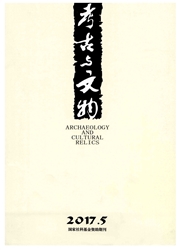

 中文摘要:
中文摘要:
南山头与睦王河两处遗址均位于陕西省渭南市白水河流域,且都包含半坡文化晚期东庄类型遗存。浮选结果表明,仰韶文化时期,两遗址地区农业生产是以粟、黍为主的旱作农业;南山头遗址地区在龙山到战国时期出现了小麦,但仍以粟、黍为主要的粮食作物,小麦仅作为一种粮食类型的补充出现,并没有大面积地进行推广。结合已有的环境研究以及考古研究结果,我们认为这可能与当地较为干旱的地理环境和较为落后的加工方式有关。两处遗址均发现有半坡文化向庙底沟文化转型阶段(东庄类型)的遗存,目前我国尚未有这一阶段的浮选工作,本次工作为研究这个关键的文化转型时期农业发展及生产情况提供了重要材料。
 英文摘要:
英文摘要:
The Nanshantou and Muwanghe sites are located in the Baishui River valley, Weinan city, Shaanxi. Both sites include remains belonging to the Dongzhuang type of the Late Banpo Culture. According to the result of the flotation, the agricultural production at the two sites during the Yangshao Culture relied on the cultivation of drought-resistant crops including foxtail and broomcorn millets. Between the Longshan and Warring States periods, wheat appeared at the Nanshantou site, but the two types of millets were the most dominant crops in local subsistence. In other words, wheat was cultivated as a type of supplementary crop but was not widely planted. Coupled with the previous palaeo-environmental research and archaeological studies, this pattern in the archaeo botanical assemblage described above should be related to the relatively arid local environment and less advanced technique in food-processing. From both sites remains that are associated with the transition between the Banpo Culture and Miaodiguo Culture(Dongzhuang type) were found, but no scholarly work focusing on the flotation during this critical period has been conducted before. Thus this study provides important data to investigate the agricultural development and subsistence during this cultural transitional period.
 同期刊论文项目
同期刊论文项目
 同项目期刊论文
同项目期刊论文
 期刊信息
期刊信息
